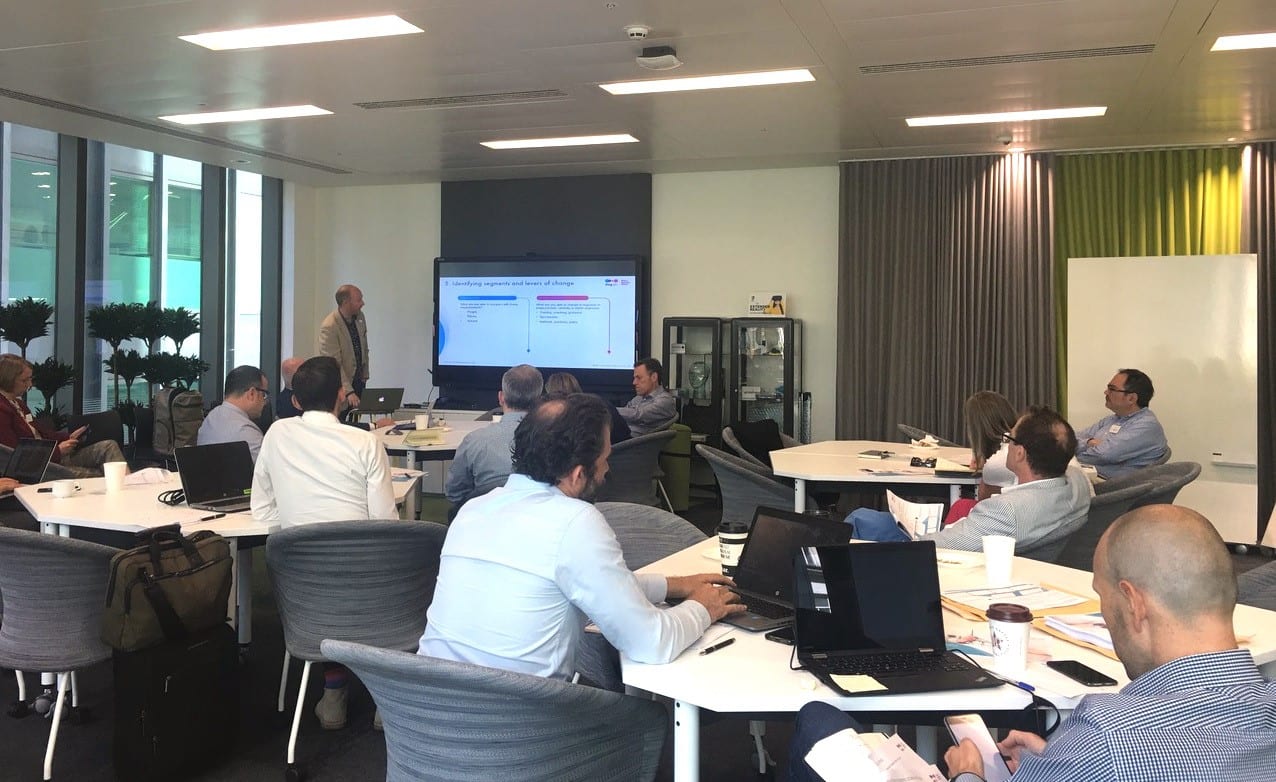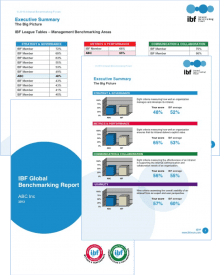Eight key themes from the Digital Workplace Executive Forum, June 26–27, 2018

At a recent Digital Workplace Executive Forum, hosted by DWG and Avanade, senior executives from major private and public sector organizations immersed themselves in the trends, challenges and opportunities of the evolving digital world of work. Here are eight key themes that arose in the discussions among these senior digital workplace executives:
1. Helping people get work done
The group wasn’t about to get hung up on the definition of “digital workplace”, especially as it’s a term that is still evolving. For the most part, they took the pragmatic, user-focused view that it is all about helping people to get work done and making their daily work lives easier. One participant likened it to the “cockpit” for employees, in which they have all the tools and capabilities they need, and which is available to them wherever they’re working.
“The digital workplace is any tech that enables me to do my job.”
2. Getting to a holistic view
As participants discussed challenges, many described common issues with a fragmented digital workplace that lacks coordination. Behind this lies a lack of common understanding about what a shared digital workplace might look like, with local realities and goals often dominating investment decisions. Emerging from this discussion was a clear need to articulate a digital workplace vision for the whole organization that is meaningful to stakeholders in different areas.
“The irony is that tech is used to break silos but also creates silos.”
“Allowing people to diversify just creates fragmentation and duplication for the future.”
3. Getting stakeholders on-board
There was acknowledgement that getting to such a holistic view is the end-product of a gradual process of walking the digital workplace concept around stakeholders in different parts of the organization and – crucially – understanding their needs and priorities. There were stories to back this up of well thought-out efforts to engage senior managers over the course of time, as well as ensuring early engagement with bodies such as work councils and legal teams.
“We are talking to work councils – to get them on-board as early as possible, get them to understand – so they don’t feel like it’s being done to them.”
“We’re trying to get HR people and data scientists to work together; shared services need top-down business support.”
4. Focusing on people first and foremost
Many times in the discussion we were (quite rightly) drawn back to the need for a people-centric approach to the digital workplace. Participants acknowledged that this needs to be grounded in research in order to dig into and understand what the real problems encountered by employees are – rather than just rushing in with a digital solution. This was likened to removing road bumps in order to make employee journeys smoother as they navigate the tasks involved in their jobs.
“Every time there’s a problem, don’t rush in with a digital solution – it’s not always the answer.”
“We need to give employees some level of flexibility. If not, groups will find another way of doing it anyway, such as installing WhatsApp groups.”
5. Developing a digital mindset and skills
An aspect of the conversation focused in on developing a digital mindset as well as the right skills to navigate the digital world of work. Importantly, this means ensuring that we don’t just keep doing the same old things (like inefficient or unnecessary meetings!) in the digital workplace, and instead fundamentally change our practices as we shift to digital. On the skills front, there was recognition that, if we’re going to digitally transform our organizations, we need to do so from the inside out – which means ensuring that people within the organization are ready to work digitally.
“Going from the quill to email via SharePoint.”
6. Implementing governance (but not too much)
Governance got a pretty hard rap in the discussions. It’s not the most glamorous topic at the best of times, but as digital workplace teams strive to keep up with employee demands for new tools, features and capabilities, it gets that much tougher. So governance remains important, critical even, but needs to be balanced with being responsive to how people work and what they need, especially against the backdrop of a fast-changing technology landscape.
“The marketing function work with agencies every day – we can’t mandate for what and who they work with; we have to be flexible.”
7. Measuring progress
Over the course of the meeting, we grappled with how to put in place key performance indicators (KPIs) and metrics for the digital workplace that are robust, insightful and convincing. It was clear that this remains a critical challenge for many, with analytics tools often limited in their capabilities or entirely absent, and a lack of knowledge of data analysis an issue for some teams. This was felt to be a key step if the digital workplace, as well as the teams behind it, are to get the needed level of priority inside the organization.
“The power of data is key: Reporting is good, Analytics is better, Data Analytics is even better.”
“We can measure outcomes like cost optimization, people and productivity, revenue and corporate social responsibility, but it’s difficult to claim a plausible link between this and the digital workplace.”
8. Writing the EX playbook
Employee experience (EX) was the hero in the room for most, with a strong feeling that senior stakeholders need to “get” its importance and power to contribute to the overall goals of the organization. “EX is the new CX (customer experience)” became a key phrase as the discussion progressed. Shifting the needle on EX, of which digital plays a key part, was viewed as a key priority. It was also seen as a reminder for digital workplace teams that they’re not just delivering technology or managing channels, but rather they’re delivering digital employee experiences that are critical to the vitality and success of the organization.
“We need to put EX much higher up the business agenda.”
Research and Resources
- PODCAST: Why experience is the heartbeat of a modern digital workplace
- FREE REPORT: Digital Workplace 2030: Preparing now for the digital worlds of work to come
- FREE EXECUTIVE SUMMARY: Measuring the digital workplace: The power of metrics in the connected workplace
Take the next step
Digital Workplace Integration
Categorised in: Digital workplace


